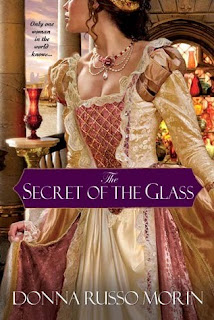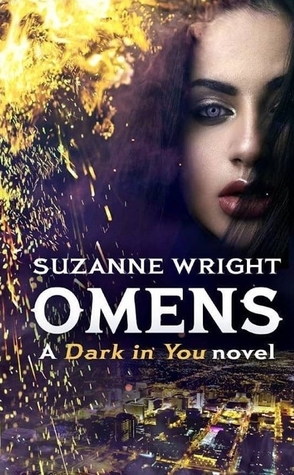
At the dawn of the 17th Century, the glassmakers of Murano are revered as master artisans, enjoying privileges far beyond their station, but they are forced to live in virtual imprisonment, contained by the greedy Venetian government who fears other countries will learn the intricacies of the craft…and reap the rewards.
Sophia Fiolario, the comely daughter of a glass making maestro, has no desire for marriage, finding her serenity in the love of her family and the beauty of the glass. She learns of its secrets at her father’s side, where a woman is forbidden to be. The life Sophia loves is threatened by the poor health of her father and the determined attentions of a nobleman who could and would never love her but seeks to possess her wealth and the privilege it affords. Thrust into the opulent world of the Venetian court, Sophia becomes embroiled in the scheming machinations of the courtiers’ lives. The beauty of Venice, the magnificence of the Doge’s Palace, are rivaled only by the intrigue and danger that festers behind their splendid facades. As she searches for an escape, she finds the arms of another, a man whose own desperate situation is yet another obstacle in their path.
Amidst political and religious intrigue, the scientific furor ignited by Galileo, and even murder, Sophia must do anything to protect herself, her family…and the secret of the glass.
This is a major, full-length historical novel, set in 17th century Venice, when the Italian Renaissance was in full bloom. It was the world of the painter, the sculptor, the fresco, the artisan of note. Italian glass was world-known and desired all over Europe and the farther reaches of civilzation, and while the glass artisans were often wealthy beyond belief, they were still thought of as the merchant class, not the highest escelon of Venetian society. The politics of Italy was robust, often dirty, and certainly mixed up heavily with the influence of the Papacy and the increasing struggle of “the masses” to obtain political voice. The ruling classes fought hard to retain power; the artisans fought hard to gain power, and the workers just simply wanted to be given some say in their futures. Social traditions and norms were iron-clad, and the place of women was largely decorative. Young women were still very much social chattal, given and received in loveless marriages in order to gain wealth or enhance a family’s social standing.
We now meet Sophia Fiolario, the main character in the story, daughter of a wealthy glass blower and now being betrothed to the oldest son of one of Venice’s oldest families. That the match was approved by the Doge (leader of the ruling council) and looked upon socially as a great coup for the Fiolario family, had little to do with Sophia’s response to this development in her life. Her fiance was older, didn’t want to marry but wanted her dad’s money. He fulfilled his social obligations in squiring her to important events and introducing her as his fiance. Beyond that he put her aside like a boring book. He had been very frank in telling her that following her dad’s death and their marriage, he was sending her to another town, forcing her to live alone for the rest of her life, and putting her mother and two sisters in a convent, thus relieving him of the obligation to find husbands for them or provide them with dowries. Nice guy. This would leave him free and financially able to pursue his political and scientific goals.
But Sophia’s heart is engaged by another of the council members, a man without many prospects and who had no way of bringing about the breaking of the betrothal contract. He wants her and she wants him, but their future together is almost non-existent and virtually impossible to imagine. He is her friend and companion in plotting her escape from Venice, not only for herself but for her mother and sisters. Perhaps there is hope . . .
Sophia has another problem: she is a glass blower. Having had no sons, her father had seen her love of the glass, been teaching her the craft for many years, and as she became more skilled, realized that she could pick up the “slack” as he was becoming ill and a skilled master glass blower was needed to fulfill the commissions that were the life blood of the family finances. Not only did she do the normal sorts of commissions, but her father’s glass works was given the task of creating Galileo’s first telescope–The Glass. Sophia knew what was needed and was a critical person in creating it.
This novel is alive with history. In fact, there were times when I got somewhat overwhelmed with the historical and political dialogue and felt it was just too much. Yet any student of history knows that Galileo, first applauded for his discoveries and his razor-sharp mind, was arrested because he dared to proclaim that the earth was not the center of the Universe. He was forced to retract many of his scientific proclamations, was eventually allowed to return to his villa outside Florence, and his work was acclaimed and affirmed in the 20th century. There are other important historical figures in this novel who swarm around the love story that is at its core: the love between Sophia and Teodoro. There are surprises and the ending is completely unexpected in many ways.
I love historical novels, and this would have been one that I would have assigned to my high school world history students in the past. They couldn’t have learned about this period in Italian history any better. (Historical fiction can often be the best way to learn history.) But I felt at times that the history and the politics overshadowed the love story almost to the point that it got lost for me. I learned a lot and I enjoyed discovering aspects of this historical era that were new for me. Even Sophia’s involvement with The Glass got lost at times. For some this will not be a negative. For me, as a lover of historical romance, I just felt there was not a good balance. That is not to detract from the excellent writing and research that went into the creation of this work. It is quite mind-boggling in many ways. But I grew a bit weary looking for the next phase in Sophia’s personal story as I waded through the meetings of the council and the political machinations of the various factions in Venetian government.
In the end, their is much to like here. It really depends on one’s personal likes and dislikes. This book is written so well. The love story and the social context in which it takes place is fascinating in so many ways. If you like history, and I really mean–like history–you will like and appreciate this book. It will be a bit heavy for some.
I give this book a rating of 3.25 out of 5.
You can read more from Judith at Dr. J’s Book Place.





I don’t think the book would be for me but I love the cover – very vibrant.